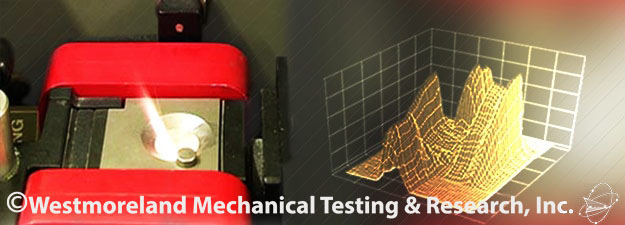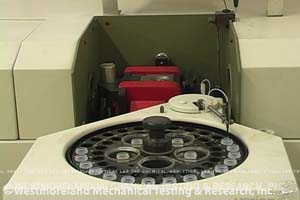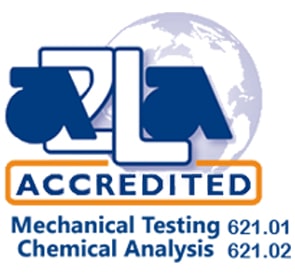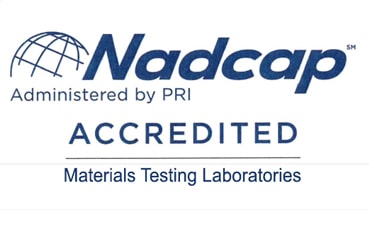Analytical Chemistry

The WMT&R Analytical Chemistry Department maintains ISO and NADCAP accreditations for an array of test methods capable of interrogating many material types. Our facility is situated to process and prepare iron, steel, aluminum, nickel, cobalt, titanium, copper, magnesium and numerous other matrix and alloy types. Our sample prep and technique portfolio allow us to process traditional alloys of substantial size to specialty clad, coated, powder or otherwise unique properties/format. Finally, all of our methods utilize appropriate matrix matching, Reference Materials and control checks to ensure our process is robust, up to expectation and accurate.
For bulk composition needs, we employ Arc/Spark-OES (Arc/Spark-Optical Emission Spectrometry) and ICP-OES (Inductively Coupled Plasma-Optical Emission Spectrometry). Both techniques excite the sample with a high energy source to bring the atoms’ electrons to an excited state. Once the electrons return to their natural state, a photon of a signature wavelength is released (the same phenomenon observed in fireworks). The wavelength and magnitude of this emission provides very accurate and sensitive detection capabilities. The key difference is sample introduction; Arc/Spark ablates material directly from a solid sample while ICP uses a liquid matrix of digested material. Another spectrometric technique at the lab’s
disposal is XRF (X-Ray Fluorescence). Similarly, this technology measures bulk chemistry by exciting the sample. However, rather than emitted photons, XRF measures emitted fluorescent x-rays following excitation by a primary x-ray source.
These complimentary applications allow us to provide bulk chemistry on nearly any metallic material our customers require. We maintain accreditations to ASTM E1251, E415, E1086, E3047, E2994 and B954 for Arc/Spark, ASTM E2371, E2594 and E3061 for ICP-OES, and ASTM E1621, E1085, E572, E2465 and E539 for XRF.
Gas analyses (Carbon, Sulfur, Oxygen, Nitrogen and Hydrogen) are performed using IGF (Inert Gas Fusion) or Combustion techniques. We have proven methods for a wide range of material types and are accredited to ASTM E1447, E1409, E1941 and E1019 for these gases. These gas analyzers use different mechanisms, but the net result is a very precise and sensitive detection of gases trapped within the metallic sample(s).
Beyond bulk chemistry, trace elements are of great impact to regulatory and quality needs. When parts per million (ppm) and low concentration analysis is needed, ICP-MS (Inductively Coupled Plasma-Mass Spectrometry) and GFAA (Graphite Furnace Atomic Absorption) are offered capabilities. Capable of sensitivities and specificities ideal for the low-level requirements of regulated/prohibited material analysis and material contaminant/quality checks, these technologies are well suited to this need.
Whatever your metals analysis needs, the WMT&R Analytical Chemistry team has a solution. Backed by robust methods, quality systems and industry accreditations, we look forward to supporting your goals with quality and speed. To request a quote, Contact Us Today!



